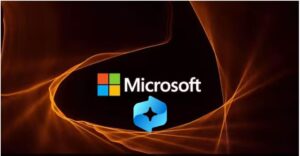DevSecOps, or integrating security into DevOps processes, has become a crucial component of contemporary software development. Prioritizing security throughout the development lifecycle is vital as firms use DevOps to speed up the delivery of their software.
- Shift-Left Security
In DevSecOps, shift-left security is a core idea. Moving security testing and analysis as early as possible in the development cycle is part of this strategy. Secure code should be written from the beginning by developers. During the coding phase, tools like static code analysis, code review, and security lines can be used to find vulnerabilities.
- Automated Security Testing
Security testing can benefit significantly from automation, a key component of DevOps. Automated security testing tools should be a part of your CI/CD process. Code and infrastructure can be automatically scanned for vulnerabilities using OWASP ZAP, Nessus, and SonarQube tools.
- Continuous Monitoring
Applications and infrastructure must be monitored in real-time if security concerns are to be quickly detected and addressed. Monitoring and alerting tools like Prometheus and Grafana can help ensure that any anomalies or security breaches are addressed immediately.
- Container Security
DevOps frequently uses containers, which call for certain security precautions. Clair and Docker Security Scanning programs may check container images for security flaws and enforce security rules.
- Security using Infrastructure as Code (IaC)
Ensure the infrastructure code you use is just as secure as your application code. The security of your infrastructure configurations may be evaluated, and compliance with security requirements can be ensured using functionality provided by tools like AWS Config, Terraform, and Ansible.
- Secret Management
Manage secrets, such as API keys, passwords, and certificates, effectively. For example, AWS Secrets Manager and HashiCorp Vault offer effective secret management, access control, and rotation solutions.
- Identity and Access Management (IAM)
To manage access to your systems, implement robust IAM procedures. IAM services are available from cloud providers like AWS, Azure, and Google Cloud to manage user roles and create fine-grained permissions.
- Vulnerability Scanning
Check for vulnerabilities in your applications and systems regularly. OpenVAS, Nessus, and Qualys are tools that might help find vulnerabilities attackers exploit.
- Incident Response Planning
Make a plan for responding to incidents to prepare you for the worst. Establish a plan for handling security issues, including roles, responsibilities, and processes. Slack and Atlassian Jira are two tools that can help with communication and incident tracking.
- Security Awareness and Training
Your operations and development staff should take regular security training. Your first line of defense is a knowledgeable team. Security classes are available on websites like Pluralsight and Coursera, and gamified training tools like Capture The Flag (CTF) games help improve practical abilities.
In Conclusion
DevOps should consider security as a core component rather than as an afterthought. You can significantly improve the security posture of your DevOps pipeline by putting these best practices into practice and utilizing the appropriate technologies. Keep in mind that security is a constant process and that continuous improvement in the dynamic software development environment is essential to staying ahead of developing risks. DevSecOps is not just a trendy term; today’s businesses must create and manage secure systems and apps.















